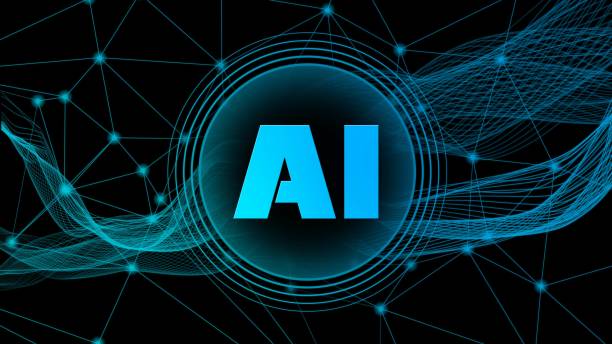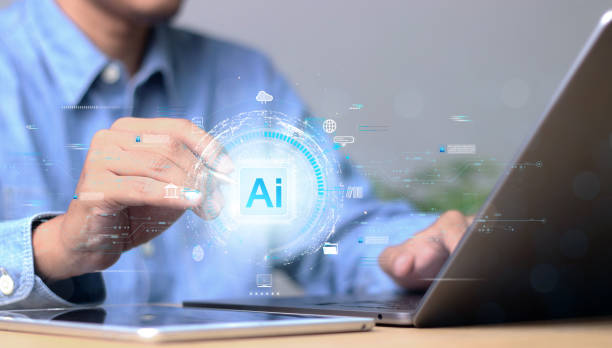What is an Artificial Intelligence Robot and How Does It Work?
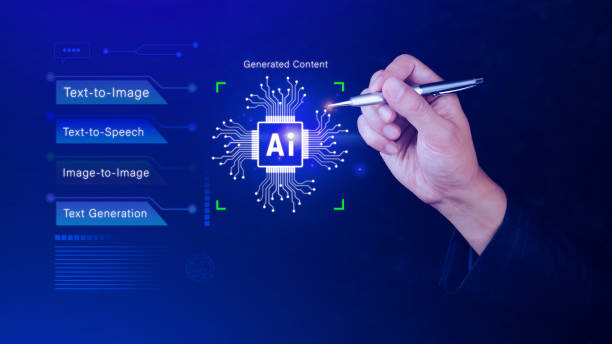
#Artificial_Intelligence_Robot (AI Robot) is a combination of two important technological fields: #Artificial_Intelligence (AI) and #Robotics.
Simply put, an AI robot is a physical or virtual machine that, using artificial intelligence algorithms, is capable of performing tasks that typically require human intelligence.
These tasks can include learning, reasoning, problem-solving, pattern recognition, and natural language understanding.
Artificial intelligence enables robots to interact with their environment, process information, and make intelligent decisions.
The way an AI robot typically works is that data is first collected through sensors (such as cameras, microphones, or other sensors).
Then, this data is sent to a processing system (such as a computer or microcontroller).
The processing system analyzes the data using AI algorithms and generates an appropriate response or action.
Finally, this response or action is executed through actuators (such as motors, arms, or displays).
AI robots can be applied in various fields, including industry, medicine, education, and customer services.
AI robots have the ability to perform repetitive, dangerous, or difficult tasks and can help improve productivity and reduce costs.
Robotics.
Are you dissatisfied with the low conversion rate of visitors to customers on your e-commerce website?
Solve this problem forever with professional e-commerce website design by Rasawob!
✅ Increase visitor-to-customer conversion rate
✅ Create an excellent user experience and build customer trust
⚡ Get free consultation
Types of AI Robots Based on Application

AI robots are divided into various types based on their applications.
Industrial robots, used in factory production lines for repetitive and precise tasks.
Medical robots, which assist doctors in complex surgeries and increase operational precision.
Service robots, which provide services to customers in hotels, restaurants, and stores.
Domestic robots, used for house cleaning, childcare, elder care, or entertainment.
Military robots, used in battlefields for target identification, mine disposal, or equipment transportation.
And space robots, used for planetary exploration and collecting samples from space.
Each of these types of AI robots has its own specific features and capabilities that make them suitable for particular tasks.
For example, industrial robots typically have powerful and precise arms, while medical robots must have high accuracy and delicacy.
Domestic robots must be easy to use, and space robots must operate under harsh and difficult conditions in space.
Regardless of the field in which an AI robot is employed, its main goal is to increase productivity, reduce costs, and improve the quality of human life.
Advantages and Disadvantages of Using Artificial Intelligence Robots

Using AI robots offers many advantages, including increased productivity, reduced costs, improved accuracy, and the performance of dangerous tasks.
However, there are also disadvantages, such as high development and maintenance costs, ethical concerns about replacing humans, and security risks from robot hacking.
One of the most important advantages of using AI robots is increased productivity.
Robots can work around the clock without fatigue and perform tasks with greater speed and accuracy than humans.
This can lead to increased production and reduced costs.
On the other hand, the high cost of developing and maintaining AI robots can be a barrier to their widespread use.
Developing complex robots requires high expertise and technical knowledge, and their maintenance also requires regular servicing.
Ethical concerns about humans being replaced by robots are also an important issue.
With the increasing use of robots in various industries, there is a concern that many jobs will be eliminated and people will become unemployed.
| Advantages | Disadvantages |
|---|---|
| Increased productivity | High cost |
| Reduced costs | Ethical concerns |
| Improved accuracy | Security risks |
What Will Be the Future of Artificial Intelligence Robots?
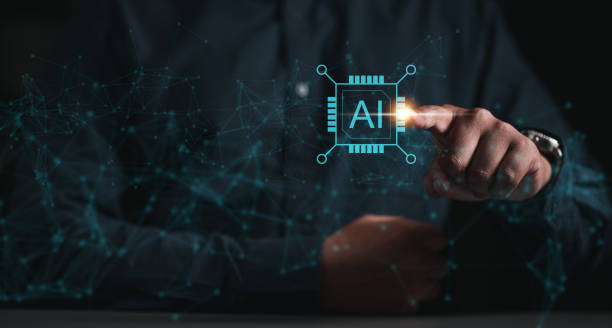
The future of AI robots is very bright and full of potential.
With continuous advancements in artificial intelligence and robotics, robots are expected to play a more significant role in our lives.
In the future, AI robots will be capable of performing more complex tasks, interacting more naturally with humans, and even understanding and responding to emotions.
One of the significant trends in the future of AI robots is the development of autonomous robots.
These robots will be able to perform their tasks and make intelligent decisions without human intervention.
Autonomous robots can be used in various fields such as transportation, agriculture, and industry.
Another trend is the development of collaborative robots.
These robots collaborate with humans in the workplace and perform tasks jointly.
Collaborative robots can help humans with difficult and dangerous tasks and increase productivity.
AI robots will also play a crucial role in healthcare.
Surgical robots, nursing robots, and pharmacy robots are just a few examples of robot applications in this field.
Are you concerned about your e-commerce website’s low conversion rate and not achieving your desired sales?
Rasawob is your specialized solution for a successful e-commerce website.
✅ Significant increase in conversion rates and sales
✅ Professional and user-friendly design to ensure customer satisfaction
⚡ Ready for a transformation in online sales? Get a free consultation!
How to Build an Artificial Intelligence Robot?

Building an AI robot is a complex, multi-stage process that requires knowledge and expertise in various fields such as artificial intelligence, robotics, electronics, and programming.
The first step in building an AI robot is to define its purpose and determine the tasks it needs to perform.
Based on this objective, the type of robot, necessary components, and appropriate AI algorithms must be selected.
The next step is to design and build the robot’s body.
The robot’s body should be designed to allow the robot to move easily, interact with its environment, and house its electronic and mechanical components.
After building the body, the robot’s electronic and mechanical components must be installed.
These components include sensors, actuators, a processor, and a power source.
Next, AI algorithms must be implemented.
These algorithms help the robot process data, make intelligent decisions, and interact with its environment.
AI algorithms can be implemented using programming languages such as Python, C++, or Java.
Finally, the robot must be tested, and its performance evaluated.
If necessary, changes must be made to the design, components, and algorithms to ensure the robot functions correctly.
Building an AI robot is a challenging project, but with sufficient knowledge and effort, an intelligent and efficient robot can be created.
Ethical Considerations in Artificial Intelligence Robot Development

The development of AI robots, in addition to the advantages and opportunities it creates, also brings important ethical issues and considerations.
One of the most important ethical considerations is the issue of accountability.
If an AI robot makes a mistake or causes damage, who will be responsible? Is it the robot’s manufacturer, its programmer, or its user? This issue has not yet been fully resolved and requires further discussion and consideration.
Another issue is privacy protection.
AI robots typically collect a lot of data about users.
This data can include personal information, behavioral patterns, and even emotions.
How can this data be protected and prevented from being misused? Another issue is the impact of AI robots on employment.
With the increasing use of robots in various industries, there is a concern that many jobs will be eliminated and people will become unemployed.
How can this issue be managed and a social crisis prevented? Another issue is bias and discrimination.
AI algorithms may learn biases and discriminations based on their training data and apply them in their decisions.
How can this be prevented, and how can we ensure that AI robots operate fairly and without discrimination? These are just some of the important ethical considerations in the development of AI robots.
It is necessary for developers, policymakers, and society as a whole to discuss and deliberate on these issues and find appropriate solutions to manage them.
AI robots can be a powerful tool for improving human lives, but only if they are developed responsibly and in accordance with ethical principles.
Familiarity with Programming Languages Used in Artificial Intelligence Robots
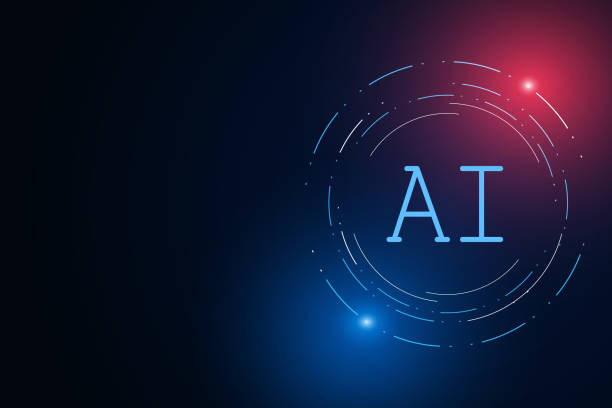
Programming languages play a fundamental role in the development of AI robots.
The choice of the appropriate language depends on the type of robot, the intended tasks, and the programmer’s expertise.
Python is one of the most popular programming languages for developing AI robots.
Python has extensive libraries for artificial intelligence, machine learning, and image processing, and it is easy to learn and use.
TensorFlow, PyTorch, and Scikit-learn are among the most popular Python libraries for AI.
C++ is also a powerful and efficient programming language used for developing AI robots.
Due to its high speed and efficiency, C++ is suitable for developing robots that require fast data processing.
OpenCV and ROS (Robot Operating System) are among the most popular C++ libraries for robotics.
Java is also a popular programming language used for developing AI robots.
Due to its high portability, Java is suitable for developing robots that need to run on various platforms.
Lisp is also an old and powerful programming language used for developing artificial intelligence systems.
Due to its high flexibility, Lisp is suitable for developing complex and customized systems.
Ultimately, the choice of the appropriate programming language depends on the specific needs of the project.
Each of the above languages has its own advantages and disadvantages, and the programmer must choose the appropriate language based on these pros and cons.
The use of AI robots is increasing day by day.
| Programming Language | Advantages | Disadvantages |
|---|---|---|
| Python | Extensive libraries, easy to learn | Slower speed compared to C++ |
| C++ | High speed and efficiency | More complex to learn |
| Java | High portability | More complex than Python |
Challenges Facing Artificial Intelligence Robot Development in Iran
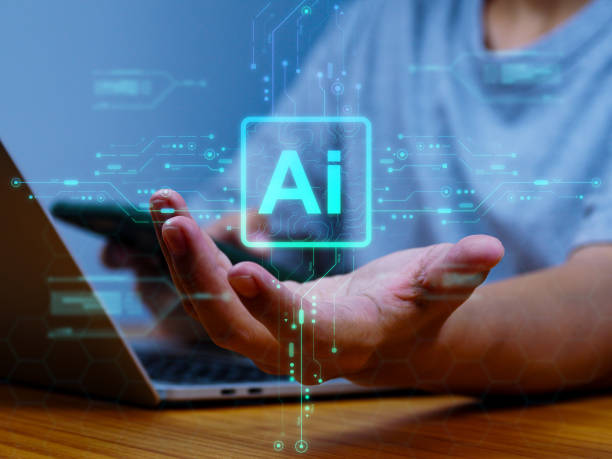
The development of AI robots in Iran faces numerous challenges.
Lack of investment, shortage of skilled workforce, and limited access to advanced technologies are among the most important of these challenges.
Investment in AI and robotics in Iran is still in its early stages and is not sufficient.
This lack of capital makes it difficult for companies and researchers to access the necessary financial resources for their development projects.
The shortage of skilled labor is also a serious challenge.
The number of AI and robotics specialists in Iran is still low, and there is a need for more training and education of skilled personnel.
Lack of access to advanced technologies is also an obstacle to the development of AI robots in Iran.
Due to sanctions and other restrictions, Iranian companies and researchers cannot easily access the necessary advanced technologies.
Despite these challenges, significant efforts are underway to develop AI and robotics in Iran.
The government and the private sector are investing in this area, and universities and research centers are also training specialized personnel.
By addressing these challenges, Iran can become one of the leading countries in AI robotics and benefit from this technology.
AI robots in Iran can play an important role in the country’s economic and social development.
Did you know that 85% of customers check your company’s website before any interaction?
With Rasawob, build a corporate website that deserves your credibility.
✅ Increase customer credibility and trust
✅ Attract high-quality leads
⚡ Get free website design consultation
Applications of Artificial Intelligence Robots in Daily Life
![]()
The applications of AI robots in our daily lives are increasing day by day.
From smart vacuum cleaners to voice assistants and self-driving cars, AI robots are changing the way we live.
Smart vacuum cleaners use AI algorithms to identify and clean home floors.
These vacuum cleaners can automatically create a map of the house, identify obstacles, and choose the optimal cleaning path.
Voice assistants like Siri, Alexa, and Google Assistant use AI to understand and respond to voice commands.
These assistants can help us with tasks such as playing music, setting reminders, and answering questions.
Self-driving cars use AI to drive without human intervention.
These vehicles can identify their surroundings using sensors and cameras, determine the route, and prevent accidents.
In addition to these applications, AI robots are also being used in other fields such as medicine, education, and entertainment.
Medical robots can assist doctors in complex surgeries, educational robots can help students learn new concepts, and entertainment robots can play with children and keep them amused.
The use of AI robots in daily life can help us perform tasks faster, easier, and more efficiently.
AI Robot Learning and Training Resources

Multiple resources are available for learning and training in AI robotics.
Online courses, books, scientific articles, and practical projects are among these resources.
Online courses are an excellent way to learn basic and advanced concepts in AI and robotics.
Websites like Coursera, Udacity, and edX offer a variety of courses in this field.
Books are also a valuable resource for deeper learning of AI and robotics concepts.
Many books on these topics can help you learn basic and advanced concepts.
Scientific articles can also help you understand the latest research findings and advancements in AI and robotics.
You can find scientific articles on websites like Google Scholar and IEEE Xplore.
Practical projects are an excellent way to practice and enhance your skills in AI and robotics.
You can start with small practical projects and gradually undertake more complex ones.
In addition to these resources, you can participate in AI and robotics workshops and conferences to connect with other experts and enthusiasts in the field.
By utilizing these resources, you can become an expert in AI robotics and work in this field.
AI robotics has a bright future, and there are many opportunities for specialists in this area.
Frequently Asked Questions
| Question | Answer |
|---|---|
| What is an AI robot? | An Artificial Intelligence Robot (AI Robot) is a machine capable of perceiving its environment, reasoning, learning, and making decisions to perform tasks autonomously. |
| What is the difference between regular robots and AI robots? | Regular robots perform repetitive tasks based on prior programming, while AI robots can learn from experience, interact dynamically with their environment, and even behave in ways that resemble human intelligence. |
| What are the main applications of AI robots? | They are used in industries (manufacturing, assembly), medicine (surgery, diagnosis), services (customer support, domestic), exploration (space, underwater), and many other fields. |
| What technologies are used in building AI robots? | Machine Learning, Computer Vision, Natural Language Processing, Deep Learning, and Robotics are among the key technologies. |
| Can AI robots have emotions? | Currently, robots do not have emotions in the human sense. They can identify and react to emotions, but they do not experience emotions themselves. |
| What are the main challenges in developing AI robots? | Safety, reliability, ethics, autonomy, adaptability to complex environments, and natural human interaction are important challenges. |
| How are AI robots trained? | They are typically trained using large volumes of data, machine learning algorithms, and deep learning to identify patterns and make decisions. |
| Examples of AI robots in daily life? | Smart robotic vacuum cleaners, customer support chatbots, self-driving cars, and surgical robots in hospitals. |
| Are AI robots a threat to human jobs? | Some repetitive jobs may become automated, but at the same time, robots can increase productivity and create new jobs in the development, maintenance, and oversight of these systems. |
| How is the future of AI robots predicted? | They are expected to become smarter, more autonomous, and capable of performing more complex tasks, engaging in closer interaction with humans in various environments. |
And other advertising agency services by Rasawob in the field of advertising
- Smart Marketing Automation: Designed for businesses seeking online growth through precise audience targeting.
- Smart Brand Identity: A fast and efficient solution for improving SEO ranking with a focus on marketing automation.
- Smart Marketing Automation: An effective tool for digital branding with the help of marketing automation.
- Smart Sales Automation: A professional solution for online growth focusing on precise audience targeting.
- Smart Marketing Automation: Transform customer acquisition with the help of key page optimization.
And over hundreds of other services in the field of internet advertising, advertising consultation, and organizational solutions
Internet Advertising | Advertising Strategy | Advertorial
Resources
What We Need to Know About Artificial Intelligence
Familiarity with Types of Smart Robots
The Future of Artificial Intelligence in the World and Iran
How to Work with Artificial Intelligence?
? For your business to thrive in the digital world and reach more customers, Rasawob Afarin Digital Marketing Agency, specializing in user-friendly website design and comprehensive online marketing solutions, is with you.
📍 Tehran, Mirdamad Street, next to the Central Bank, South Kazeroon Alley, Ramin Alley, No. 6

